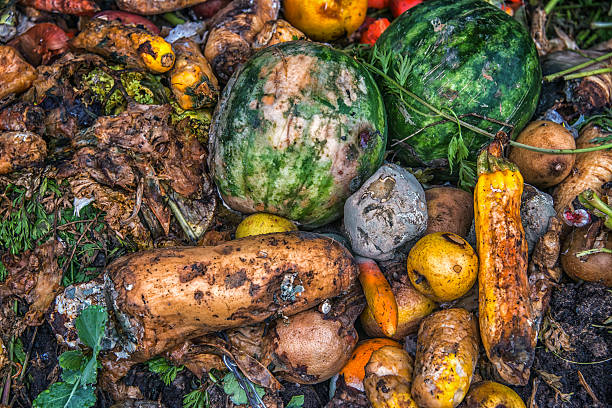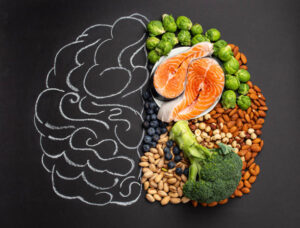The environmental impact of food waste is a serious global problem. Every year, around 30% of human food production is lost or wasted, according to the United Nations Food and Agriculture Organization (FAO). As a result, there is a significant loss of resources and a continuing degradation of natural ecosystems, as well as hunger, greenhouse gas emissions, and other sustainability challenges.
Americans waste nearly 40% of their food. Farmers, packers, shippers, manufacturers, retailers, and our homes all lose food at every step of the food production and distribution process. Approximately 42 billion pounds of food ends up in the trash cans of our homes yearly. The impact of food waste is tremendous.
What is Food Waste?

Food waste refers to the loss or waste of food meant for human use that occurs anywhere in the supply chain, from the farm to the home. We can categorize food waste into two groups, even though the term may seem self-explanatory. We lose food during the early production process, which is called “food loss”. The second is what is known as “food wastage”, which is food thrown away for reasons other than its fitness for human consumption.
Implementing waste reduction strategies and adopting green living tips are key components of climate-friendly diets and sustainable agriculture, aimed at addressing food waste globally and mitigating the adverse effects it has on the environment.
Food Waste Statistics
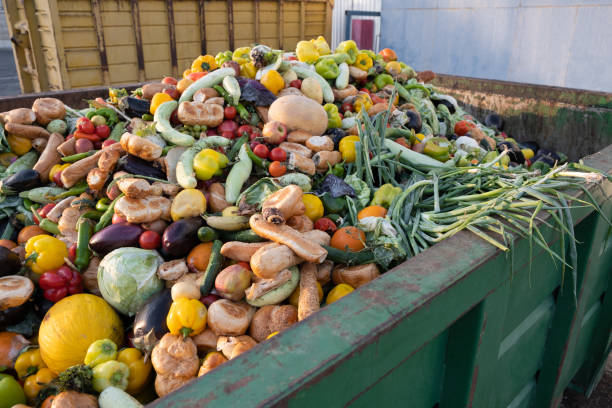
The majority of people do not realize that we can all feel the impact of food waste because we waste over 30% of all food we produce. The average amount of food we burn or throw away annually amounts to about 1.3 billion tons. These are foods that do not re-enter productive use; most of them end up in landfills.
That’s certainly true for the US, which generates the most food waste worldwide. About 24% of municipal solid waste in American landfills is food waste. According to ReFed, we waste 80 billion pounds of food annually and spend $218 billion on growing, processing, transporting, and disposing of food we never consume.
We can feel the environmental impact of food waste throughout the supply chain. More developed countries are prone to food waste due to household waste. A typical American family of four wastes $1,500 in food each year. As a result of a lack of infrastructure, waste tends to occur more often during production and handling in less-developed nations.
The environmental impact of food waste is one of sustainability. It is impossible to solve food waste problems by looking through a single lens, as we have seen with other sustainable development initiatives.
When talking about food waste, people tend to mention how much money is lost and how many lives could be saved. Having context is crucial. Around 800 million people suffer from severe malnutrition worldwide. It would take just a quarter of all the food wasted (1.3 billion tons) to feed them. Rather, 36 million of them die as a result of hunger.
Eco-friendly practices, such as sustainable food consumption and food waste management, are essential food waste solutions that promote sustainable eating habits.
Why is Food Waste a Problem?
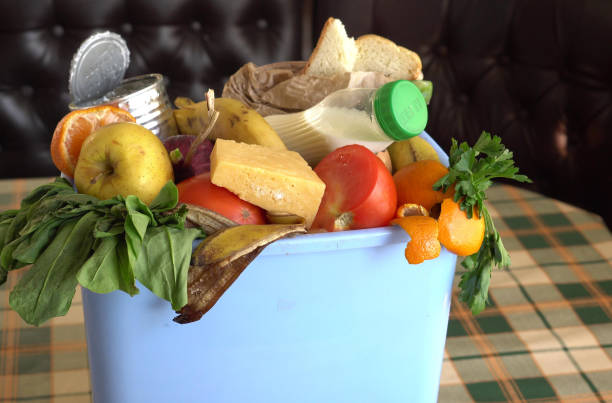
Take a moment to consider all the steps that go into preparing food. It is necessary to grow, process, package, transport, market, and sell food to maintain a zero waste lifestyle.
We can waste food in several ways. Unfortunately, food waste happens well before a meal reaches the table. We throw away a significant amount of food during the production phase. It is possible, for instance, for pests to attack farm crops. It’s also possible to lose a crop yield to bad weather. Transporting food can also cause it to go bad. As a final note, most grocery stores throw away food they cannot or won’t sell.
When we waste food, we also waste the resources that go into food production in each step. Take the packaging of frozen vegetables we discard, for instance. Imagine all the fumes that enter the atmosphere from South American fruit when it is shipped to North American markets.
We must figure out ways to reduce food waste because the environmental cost of food waste is also enormous. All stages of food production require water, for example. Some people water crops. Meat-producing animals receive water. Food packaging and transportation also require water. Wasting food also wastes water.
In the same way, waste food also contains water – just look at a juicy apple! The amount of water we waste annually is approximately 45 trillion gallons (170 trillion liters). Water consumption per person per day should be between 15 and 20 liters, according to the World Health Organization. Providing people around the world with water can be possible if we save even a fraction of that water!
The Environmental Impact of Food Waste
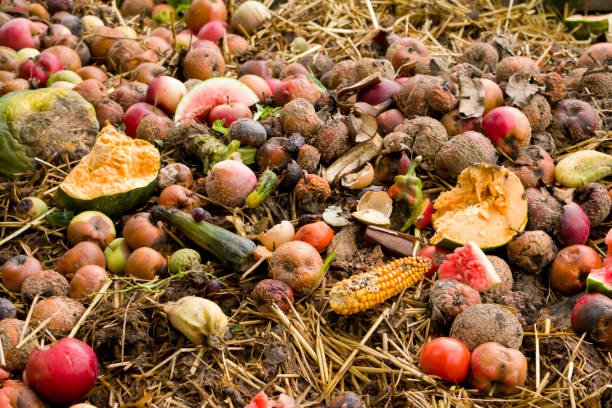
1. Waste of natural resources
Food waste can have a variety of environmental effects and prevent a zero waste lifestyle. In addition to wasting food, we waste the energy, fuel, and water needed to produce the food. The process of squandering natural resources occurs during all phases of the food chain. Here are some examples:
- Water: Food production requires water at every stage, regardless of the type of food. The world uses 70% of its water for agriculture. Food waste exacerbates water shortages that are already a cause for concern. It requires a great deal of water to grow fruits and vegetables, which are water-laden.
- Land: As a result of food waste, the agricultural land used for cultivating goes to waste. Land shortage and environmental degradation are already issues in the ecosystem, so food waste only makes the problem worse.
- Energy: Food chain machinery also uses energy that goes to waste. To reduce greenhouse gas emissions, energy conservation should be a priority.
2. Climate change
We must reduce food waste because food that is left in landfills to rot eventually releases methane, which is 25 times more powerful than carbon dioxide as a greenhouse gas. Methane remains in the atmosphere for 12 years and traps solar heat.
It leads to the emission of 20% of global greenhouse gases. We cannot underestimate the contribution of greenhouse gasses to climate change. A good system to treat and manage food waste would significantly reduce these greenhouse emissions by at least 11%.
Food waste contributes to a third of all human-induced greenhouse gas emissions, according to the Consultative Group on International Agricultural Research. After the US and China, food waste would be the third largest emitter of greenhouse gases in the world if it were a country.
3. Land degradation
We negatively impact our physical land by irresponsibly using food products. We waste land in two ways. Those land areas in which we produce food, and those in which we dump food. A total of 11.5 million hectares of land are used for agriculture around the world.
The two types of land are arable (able to grow crops) and non-arable (unable to grow crops). We produce dairy products and meat on 900 million hectares of land that isn’t arable. There is a growing demand for meat, which is causing more arable land to be converted into pastures to feed animals. Our natural land is gradually degrading in such a way that nothing natural can grow on it.
As our land gradually degrades, we will be unable to yield as a result of over-stressing it for food production in the future. Besides damaging the natural beauty of our landscapes, we also harm nature’s biodiversity, since arable land now becomes pasture, causing animals to lose their habitat and disrupting food chains.
4. Impact on biodiversity
Biological diversity refers to the variety of organisms and species in an ecosystem. In general, agriculture harms biodiversity. In places where there is an increased demand for livestock production, we commonly convert wild lands into pastures and agricultural terrains for mono-cropping.
We lose our natural flora and fauna as a result of deforestation and the conversion of natural lands to non-arable land.
Overfishing is destroying our marine ecosystems, which causes a decline in marine life populations. Fish consumption is growing faster than the global population on average. Nevertheless, a large number of fish are discarded in Europe because they don’t comply with quality standards in supermarkets. Global overexploitation and depletion of fish stocks are threatening marine ecosystems, food chains, and aquatic food security as a result of overexploitation.
5. Air pollution
Air pollution is another major environmental impact of food waste. Landfills that handle food waste have adverse effects on air quality and water quality. When food waste decomposes, methane gas is released into the atmosphere, causing odors and pollution in the surrounding areas.
Approximately a third of all greenhouse gas emissions are caused by human activity, making the global food system one of the largest causes of global warming. Food’s impact on climate change is certainly greater than energy and transportation, but it deserves more attention than the bigger picture of energy and transportation.
6. Water waste
You waste millions of gallons of water every time you waste food. Agriculture consumes the majority of freshwater in the world. Millions of hungry people and thirsty people around the world are causing freshwater resources to deplete rapidly.
Each stage of producing food requires a large amount of water, whether it is irrigation, spraying, poring, etc. Animals such as cattle, fish, and poultry need water for feeding.
As a result, we also waste millions of gallons of water when discarding food. Water is a major component of fruits and vegetables that we eat, and livestock are the heaviest water users since they drink a lot. Animals and crops require different amounts of water.
To make one bread loaf, we use 100 water buckets, while we use 54 buckets to raise one chicken breast. In addition, bacteria and other microorganisms contaminate the water, posing health risks to humans and endangering aquatic life.
Best Strategies to Reduce Food Waste

Combatting food waste is possible by following these food waste solutions and eco-friendly practices:
- Plan and manage food resources: Households can reduce food waste significantly with proper planning and management. Create a zero waste shopping list, use perishables before they rot, and store food properly to extend its shelf life.
- Educating the public: Educating the public about sustainable food consumption and the importance of reducing food waste can help reduce the negative effects. Developing knowledge about responsible food consumption requires the involvement of government and non-profit organizations.
- Food donation and recovery: The food industry, such as restaurants and supermarkets, donate excess food to food recovery programs. In addition to combating food waste, this approach addresses food insecurity.
- Regularizing portion sizes: Standard portion sizes will ensure that consumers receive the correct amount of food, reducing food waste in restaurants and food service establishments.
- Preservation methods: Food spoilage can be reduced by preserving perishable items with methods such as canning, freezing, and drying.
- Decreasing “best before” tags: To avoid premature food disposal, manufacturers and retailers should reconsider “use by” and “best before” dates. It may be possible to reduce waste by labeling products more flexible.
- Do not overbuy: We tend to purchase more when we go to the grocery store on an empty stomach or without a plan. Plan your grocery list ahead of time to avoid unnecessary purchases and eat leftovers to keep your kitchen on track.
- Freeze your food: Fresh food indeed has many benefits, but frozen foods can also be nutrient-dense. A frozen seafood product has a considerably longer shelf life than fresh seafood. When it comes to food, it is wise to cook and freeze it before it goes bad so you don’t have to toss it.
- Use leftovers creatively: Use your existing food before you go shopping. Some websites allow you to search for recipes using ingredients you already have in your kitchen. Epicurious and Allrecipes are also excellent apps for making the most of what you have in your fridge and pantry.
- Bake, boil, or blend: In recipes, you can cook with overripe vegetables and fruits, even if they don’t look pretty. Making smoothies, bread, jams, sauces, or soup stocks out of wilting, browning, or imperfect produce is a great way to use up your imperfect produce.
- Manage waste efficiently: Food waste will always end up in landfills, despite all the efforts to reduce it in earlier supply chains. Regardless, current landfilling technology is outdated and negatively impacts the environment. Consequently, many suggest improving existing waste management systems without investing a great deal of capital.
Related Reading: 10 Good Benefits of Shopping at Zero Waste Stores
Conclusion
The environmental impact of food waste not only affects ecosystems, it also impacts economies and societies around the world. We can significantly reduce the impact of food production on the environment, reduce world hunger, conserve natural resources, and mitigate the environmental impact of the production of food by understanding its impact and implementing effective strategies.
Combatting food waste and attaining a sustainable future relies on the collaboration of individuals, communities, businesses, and governments.
When we make conscious choices like sustainable eating, using food waste solutions, incorporating proper food waste management systems, following green living tips, embracing climate-friendly diets, supporting sustainable agriculture, and tackling food waste globally, we can lessen the negative effects of food waste on our planet.

